
Platform Unification Project
(PUP)
IBM Cloud
Outcomes
We achieved a positive user experience, which was evident in improved satisfaction, according to Usabilla's direct feedback, within the first month. Key accomplishments include simplified navigation, page consolidation, and enhanced team collaboration to understand systems better. The project received a 2019 Stratus Cloud Award for revolutionizing client communication and business interaction.
Team
IBM Cloud
Year
2018
Role: UX and Visual Designer
Skills: UX, UI, IA, sketching, wireframes, rapid prototyping, and usability evaluation
Team: 1 UX Designer, 3 Researchers,
1 Design Team Lead, 1 Project Manager,
3 Dev Architects, 9 Developers, and Engineers
The process
The 2018 Gartner Report highlighted crucial technical issues hindering a seamless customer experience, prompting a shift in our priorities. Our team evaluated competitors' billing and account processes. A disconnected environment, inaccessible and unable to connect to the internet, ensures data security by preventing infection or corruption.
Competitive analysis
With the guidance of our lead designer, we uncovered the overlaps of functionalities between the existing SoftLayer portal and the IBM Bluemix console. From there, we were able to identify the primary needs for unification and the gaps in the information hierarchy.
Comparative experience audit
Fortunately, we didn't begin generative research from scratch. Our researcher conducted a card sort with high-value clients to grasp their crucial management tasks and organizational methods. Moreover, generative interviews on the billing experience for IBM Cloud were conducted over the past two years.
Reuse previous research
With a comprehensive understanding of the current management experience and a preliminary idea of customer preferences, we began refining a unified information architecture. Raw user feedback from Usabilla and customer traffic trends from Amplitude analytics guided us in prioritizing patterns and functionality enhancements.
Information Architecture (IA)
As the information architecture took shape, we segmented the key sections of management workflows and conceptualized ways to merge the two separate portals. To ensure practicality, we consistently collaborated with developers, brainstormed ideas, and devised a testing plan in coordination with our researchers.
Low fidelity wireframes
Researchers enlisted five external cloud users without prior experience with the Softlayer or Bluemix portals, relying solely on our large and small competitors. This selection aimed to guarantee unbiased insights during moderated usability tests, free from the influence of navigating the existing broken user experience.
Usability study
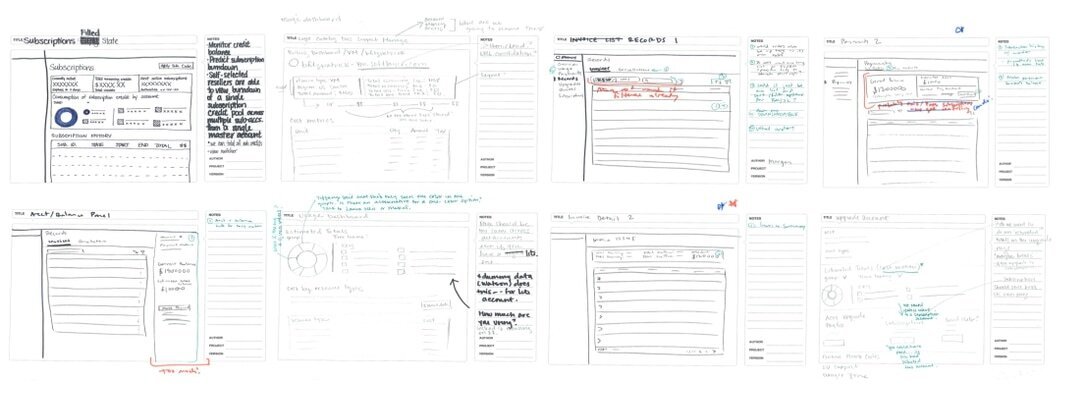
Wireframes (low-fi)
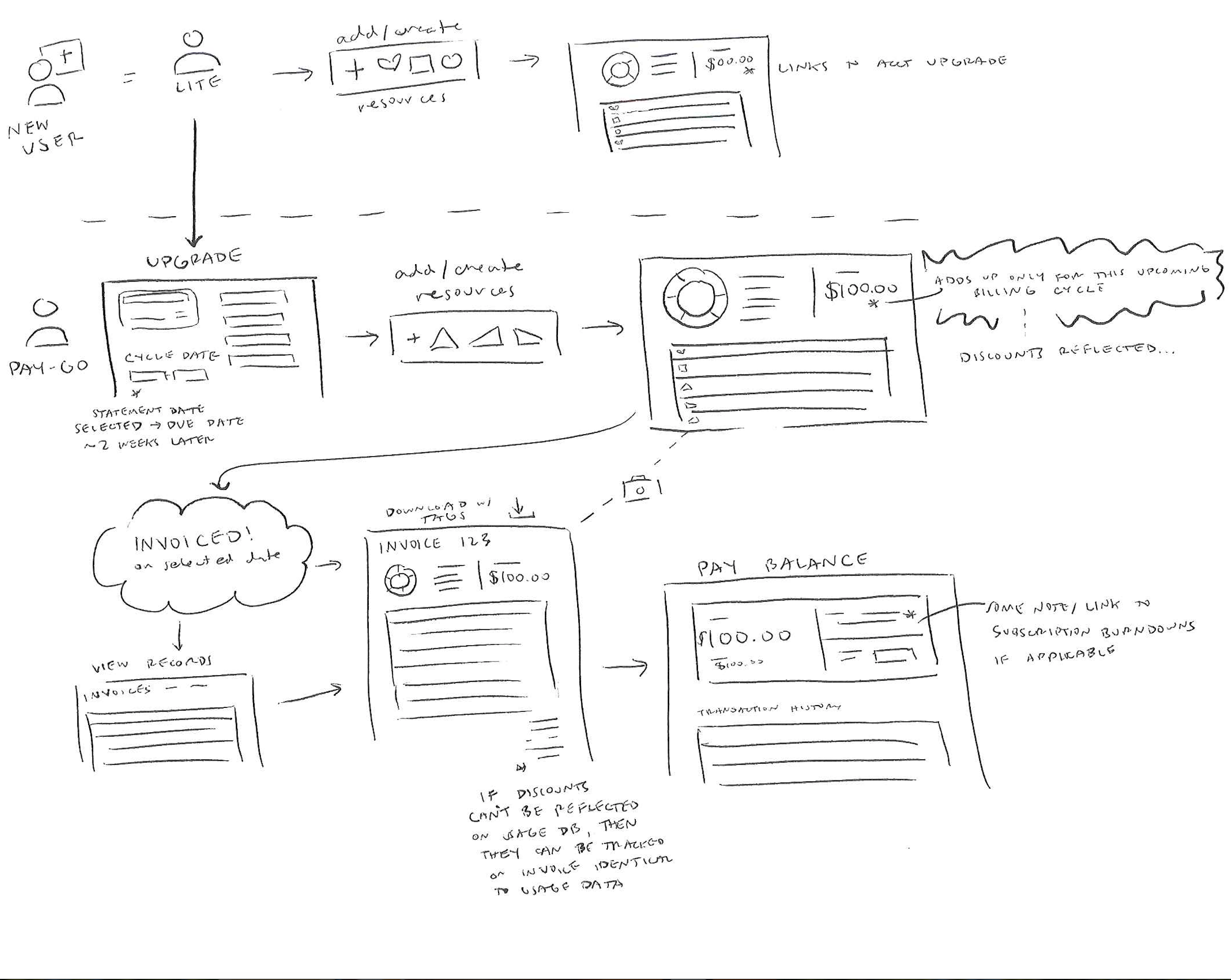
Wireframe (low-fi)

Information Architecture (IA)
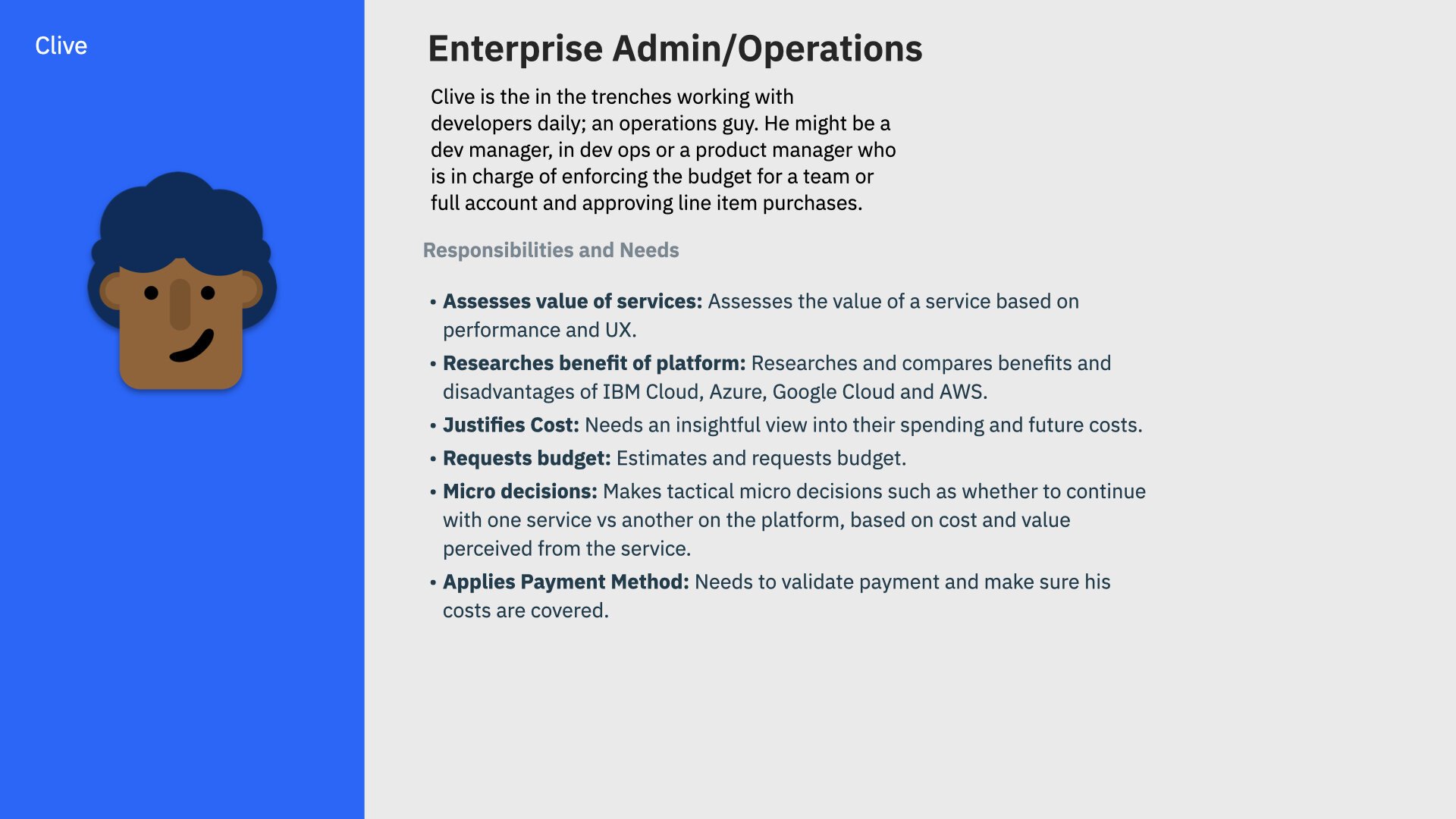
Persona: Enterprise Admin/Operators
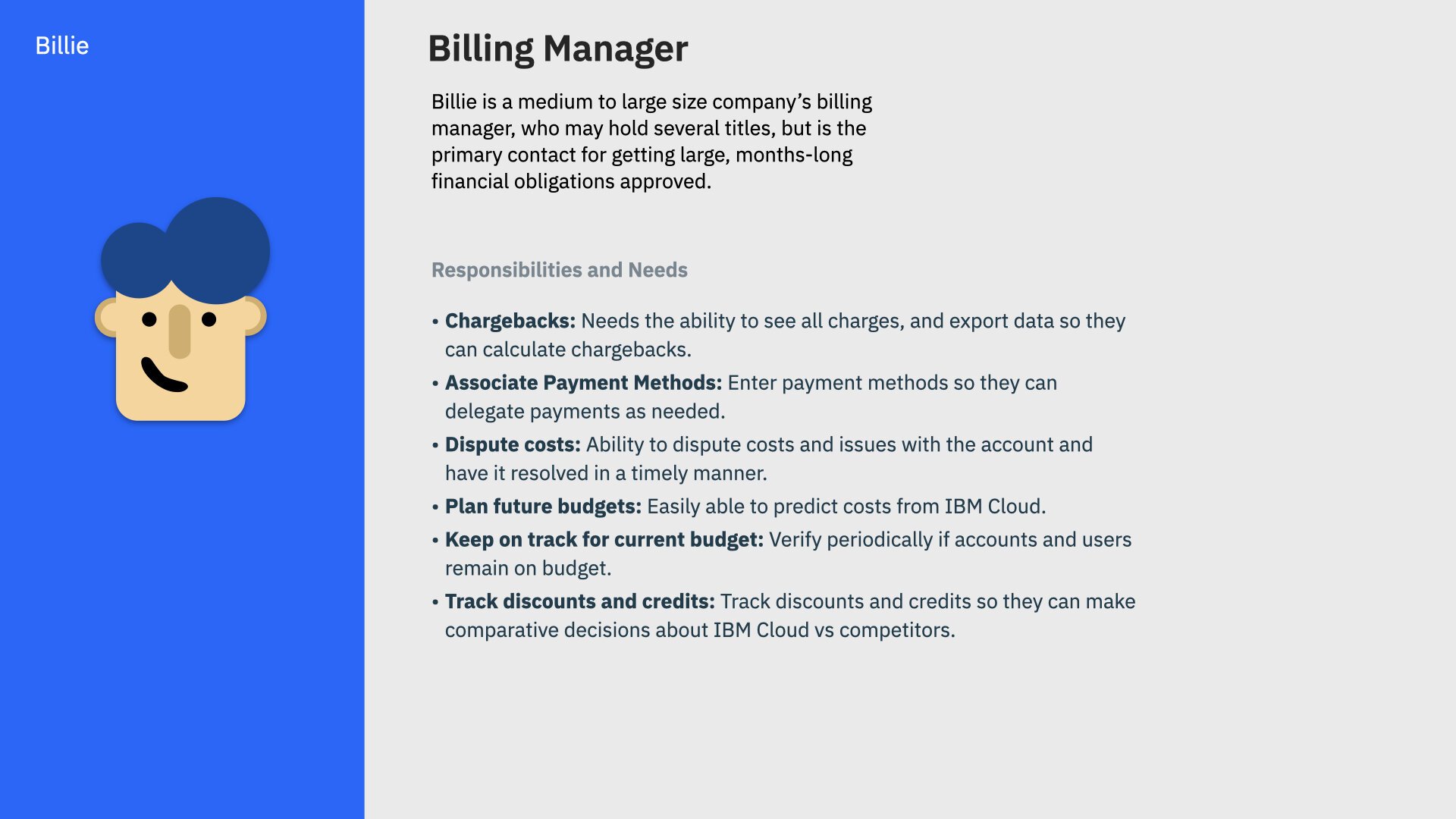
Persona: Billing Manager
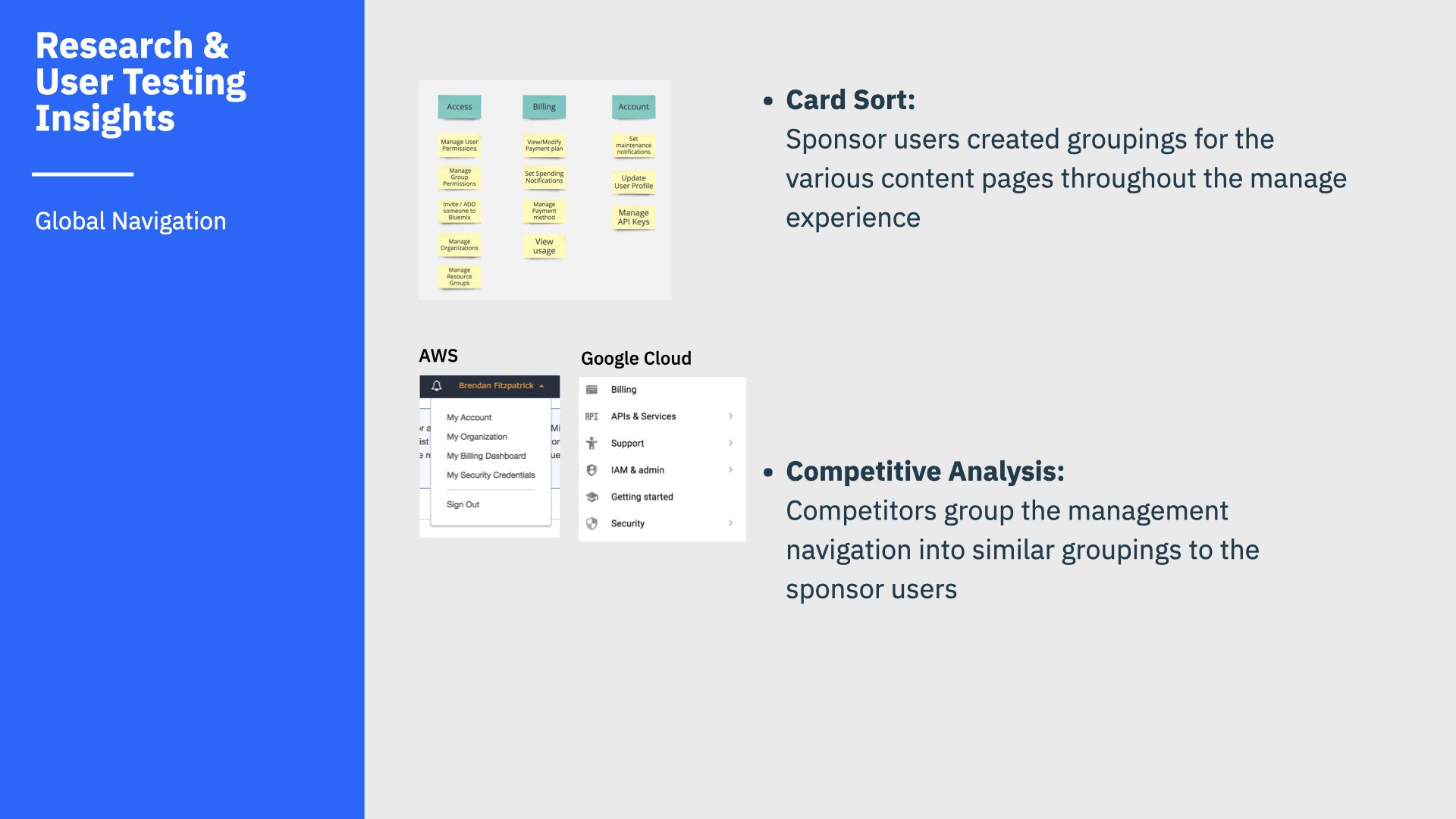
User testing insights
Painpoints
Before:
Users accessed two UIs: Bluemix Console (PaaS) and SoftLayer Control Portal (IaaS).
Inconsistent global navigation, unpredicted destinations, segregated content, hierarchy confusion.
After:
Three sections, no flyouts.
Local navigation, user-scoped profile.
Navigation
Before:
Users struggled to find accurate billing information and lacked trust in usage invoices.
Content misalignment with page titles
Poor navigation between portals
Usage dashboard limited to PaaS items
No payment capabilities in the console
After:
Improved page discoverability
Consolidated, downloadable invoices
Combined IaaS and PaaS usage data
Unified payment platform
Usability test
Before:
Junk drawer. There is no organization of accounts-specific functionality between the control and console.
After:
The division between user-scoped (global) and account-scoped settings
Information architecture for organized functionality
All features consolidated into one console
Account organization

As-is screens

To-be screens

To-be screens

As-is and to-be navigation
Retrospective
Building on tested insights, we seamlessly transitioned to the high-fidelity delivery of our new unified console for developers, utilizing the IBM Cloud's Carbon Design System. Our front-end team promptly addressed issues through whiteboarding sessions and pair programming to uphold user experience.
Concurrently, multiple squads collaborated to unify diverse user experiences across the platform. After an intense four months, the global team celebrated the successful first release with a cake party.
The collaborative design, development, and product management efforts, involving over 100 contributors worldwide, proved successful. The new, unified console received recognition and awards, highlighting its ongoing positive impact.
